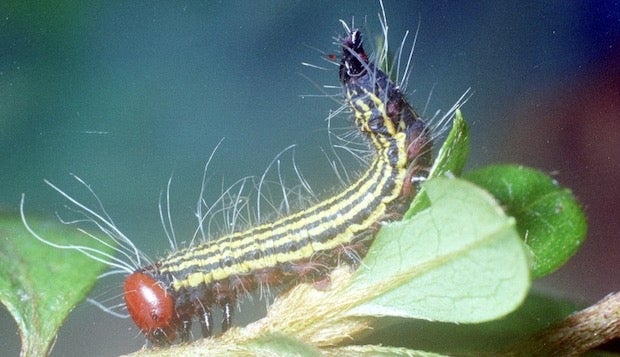Got moles?
Published 9:57 am Friday, January 15, 2021
|
Getting your Trinity Audio player ready...
|
This time of year, I always get calls about mole tunnels across lawns. Why is that?
Eastern moles spend their time foraging for food under our turf. In doing so however, they can wreak havoc on the aesthetics of our pristine lawns! Before I discuss options for dealing with the moles, I would like to discuss what they are actually doing in the yard. Moles actually play an important role in our soil health. Their tunneling serves to aerate our soils and alleviate compaction. The tunneling mixes and disperses soil particles and humic (organic) matter into the soil. Humic matter is an organic source of soil nutrients once broken down by microbial activity. Better aerification aides in bettering the drainage in our yards allowing for larger porosity throughout the upper soil profile.
If this were an exam we were taking in high school, so far, we would have an A+. Moles are carnivorous and while they do consume earthworms they also consume white grubs in the soil that are feeding on the roots of our turf and ornamental plants. These white grubs are the larvae of several types of foliage eating beetles, Japanese beetles and June beetles to name a few. Earthworms on the other hand consume and digest materials in the soil to produce worm castings. These worm castings are highly sought after for organic fertilizer supplements. So, this is not an ideal situation but one we should be able to live with nonetheless.
There are several benefits and very few drawbacks to having moles in your yard. It is understandable in high traffic areas where mole activity just cannot be tolerated due to safety concerns. Think about athletic fields or retirement homes, it is very easy to be injured by stepping in a mole tunnel. Typically, this time of year, moles tend to be foraging in wetter areas of the lawn. Addressing any drainage issues can be a long-term solution that will do more to degrade mole habitat than anything else. Often times this is difficult to achieve and can be expensive.
One tool for management of moles is to remove their food source. Treating the yard for white grub populations is a great management option but you need to make sure it is worth your time and hard-earned money to do so. Use a flat shovel to peel back a square foot of sod just under the roots. Repeat this sampling method at several locations throughout the yard. If there are more than five white grubs present in the sample area, it is a good idea to treat the yard.
Treatment can consist of a product containing milky spore bacteria applied in late September or early October. This product works through ingestion so it will take a little longer than an insecticide. However, once established, it will spread on its own, not requiring another application for several seasons.
Insecticides are another route that can be taken to manage white grubs. These are products such as Carbaryl (Sevin) or chlorotraniliprole (Acelepryn G). A full listing of the products available can be found in the 2020 North Carolina Agricultural Chemicals manual online (the 2021 manual should be available soon) or available for purchase through your local Cooperative Extension office. Make certain to read the label for information pertaining to application, irrigation, timing, and safety for your particular product. Typically, the recommendation is to apply these insecticides in late Spring or early Fall (late April-May; September-October). The imidacloprid products are applied at egg hatch, usually in early April. Remember, when using insecticides like these, you will be removing beneficial insects and earthworms from your soils. Once the food source is removed, you will have a stray tunnel from time to time but most of the upper foraging tunnels will cease, allowing for safe enjoyment of your property.
Trapping is another method for removing moles. There are several traps on the market that are available to use and work well. This is a very tedious process requiring daily diligence on the part of the trapper. Trapping moles will require a permit from the Wildlife Resources Commission. The traps must be set up on the feeding tunnels that moles are using. This can be a difficult process to determine. Each tunnel must be disturbed, the moles will then fix the tunnels they are using. This is where the traps will need to be set. Traps need to be checked consistently, morning and evening. There are wildlife removal services that are available to help with this but they can be expensive.
There are various poisons available to use now for moles containing the active ingredient Bromethalin. These were illegal in the past here in North Carolina but that has changed. However, these are only as effective as the user! Just like trapping, the most used tunnels need to be found before baiting. Once the moles fix the tunnel, place the bait in that tunnel, taking care to do as little damage to the tunnel as possible. Place a shingle or piece of wood over the hole you’ve made to keep it dark. Come back and check the bait every three to five days to see if the bait has been taken and/or re-bait.
Getting rid of moles is an arduous task, are you up for it?
Having trouble with growing in your home landscape, call the Extension office at (252)946-0111 or email Gene Fox at gene_fox@ncsu.edu.
Gene Fox is the area consumer horticulture agent with North Carolina Cooperative Extension.





